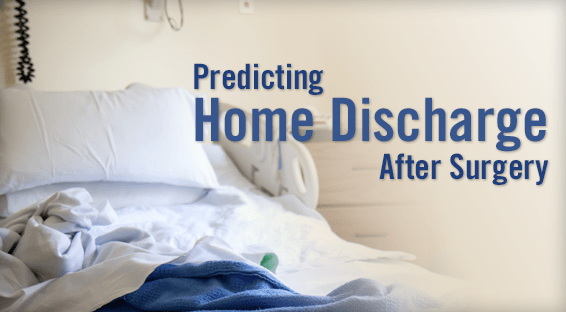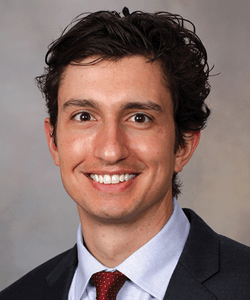Most surgical patients want to know whether or not they will need to prepare for care at a rehabilitation facility. “If prolonged postoperative care will be required, it’s helpful for patients to anticipate this so they can make arrangements in advance for their needs after surgery,” says Joseph A. Hyder, MD, PhD.
A New Risk Calculator
Several surgical risk calculators are already used in practice, but many are limited because they include features like laboratory testing, detailed medical data collection, and other variables. Clinicians lack a comprehensive tool that can predict patient-centered outcomes, such as home discharge after surgery and improve shared decision making. To address this issue, Dr. Hyder and colleagues derived and validated a simple, interview-based method to accurately predict postoperative discharge tohome in a study published in the Journal of the American College of Surgeons.
The researchers used outcomes data from the American College of Surgeons (ACS) National Surgical Quality Improvement Program, which involved more than 88,000 patients who underwent general and vascular surgery at over 400 hospitals in 2011. Using these data, they created a statistical prediction model called the “Home Calculator,” which addressed five patient risk factors:
♦ Age.
♦ Whether a patient needs assistance with activities of daily living.
♦ American Society of Anesthesiologists Performance Status.
♦ Whether the surgery was elective.
♦ A patient’s location prior to hospitalization.
According to findings, the Home Calculator had excellent prediction results for home discharge across multiple specialties, including general, vascular, gynecologic, urologic, orthopedic, and thoracic surgery. Prediction results of the Home Calculator were similar to other gold standard models for predicting morbidity and mortality. “We took some of the lessons learned from other risk calculators and applied those findings to a more patient-centered outcome,” Dr. Hyder says. “By asking a few simple questions, we can engage patients and ascertain quick and accurate results.” In addition, the calculator can be used by other surgical team members during consultations so that patients are brought into the decision-making process.
An Important Issue
Patient-centered tools like the Home Calculator allow physicians to better prepare patients and families for surgery and the recovery process. Since the study by Dr. Hyder and colleagues was published, the ACS has added non-home discharge to its own online risk calculator. However, Dr. Hyder stresses that it may not always be prudent to discharge patients home. “Most patients want to return home as soon as possible after hospitalization, but post-discharge convalescence may require more care. This Home Calculator is a starting point to discuss post-discharge recovery before operations take place.”




 TimH
TimH